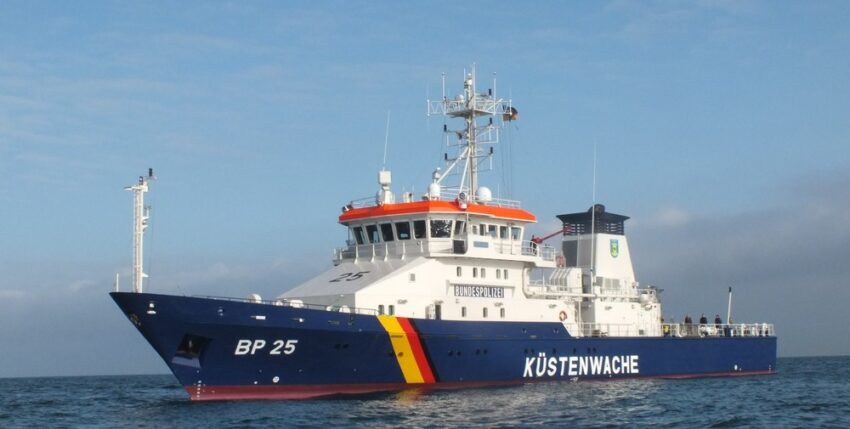How times change! In the days of the East-West confrontation, the seagoing units of the Federal Border Guard had eight boats in the Baltic Sea that were equipped with 40 mm guns. In the event of a conflict, they were to be transferred from the Baltic Sea to the German Bight to escort incoming Atlantic convoys on the final stretch. The end of the Cold War and the need for the peace dividend led to the Federal Police Sea being "demilitarised": The 40 mm Bofors were disarmed.
In the context of increasing international operations and the maritime fight against terrorism and piracy, the question repeatedly arises as to whether the seagoing units of the BPol Lake was to be equipped with machine guns. Among other things, a containerised 27 mm light naval gun solution was under discussion. The container could have been quickly equipped depending on the task. It is now rumoured in relevant specialist circles that, as one of his last official acts, the retired Federal Minister of the Interior, Thomas de Maizière, has proposed arming seagoing units of the BPol Lake has been approved. To the astonishment of representatives of German defence technology companies, the 57 mm Bofors gun (BAE Systems) is actually in the selection process. The most modern version of this tried-and-tested weapon is fitted on the Swedish Visby-class corvettes and the US Coast Guard cutters, among others. One can speculate that it was the US Coast Guard's model that tipped the scales in favour of BPol's decision.
We ask ourselves in this blog:
- Isn't the 57 mm gun basically a "symmetrical" artillery piece, as the installation on a Swedish warship and in the larger units of the US Coast Guard - which comes under the command of the US Navy in the event of tension - shows?
- In view of the greater likelihood of "asymmetric" threats, would it be Lake (fast motorboats, helicopters, drones) would a smaller, more dynamic calibre (for example the available 35 mm Millennium gun (Rheinmetall) have been the better choice?
- Can the procurers of the BPol reproach them for not thinking "outside the box"?











6 responses
From today's perspective, that was far-sighted. We have the Reforger scenario again and, in general, the total policeisation of the federal police force that Schily was striving for was a mistake. Even if the need for paramilitary border protection at land borders no longer exists, this problem still exists in connection with Frontex and joint external security, but also with other international police missions - and recently again at the sea border.
Don't we rather need a European discussion about the possible future deployment of coastguard vessels?
Should these armed ships then also be counted in the scramble for NATO's 2% target?
Segler writes: "On the other hand, it can help the navy to escape from the captivity of all the low-intensity missions in the Mediterranean and concentrate on its core military business again."
That would be a networked, whole-of-government approach! Nobody in Berlin has thought of that yet. Everyone prefers to cook their own soup. Incidentally, did the BPol See seek advice from the navy when selecting the gun?
Ask Fleet
In the past, the BGS boats had a weapon introduced in the navy, and the crews were trained there. How might that be organised now?
wonders
the sailor
And this is despite the fact that the Minister of the Interior who made the decision was previously Minister of Defence,
wonders
the sailor
The new procurement programme of the BPol See must be viewed with a certain degree of astonishment. In principle, BPol is procuring corvettes (80 metres) with powerful artillery armament. Against whom? On the other hand, it may help the navy to escape from the captivity of all the low-intensity missions in the Mediterranean and concentrate on its core military business again. That's good, although I doubt that there is a coordinated overall approach behind it. Incidentally, the US Coast has gone the other way round. The last large cutters still had 76mm, the new ones only 57mm,
summarised
the sailor